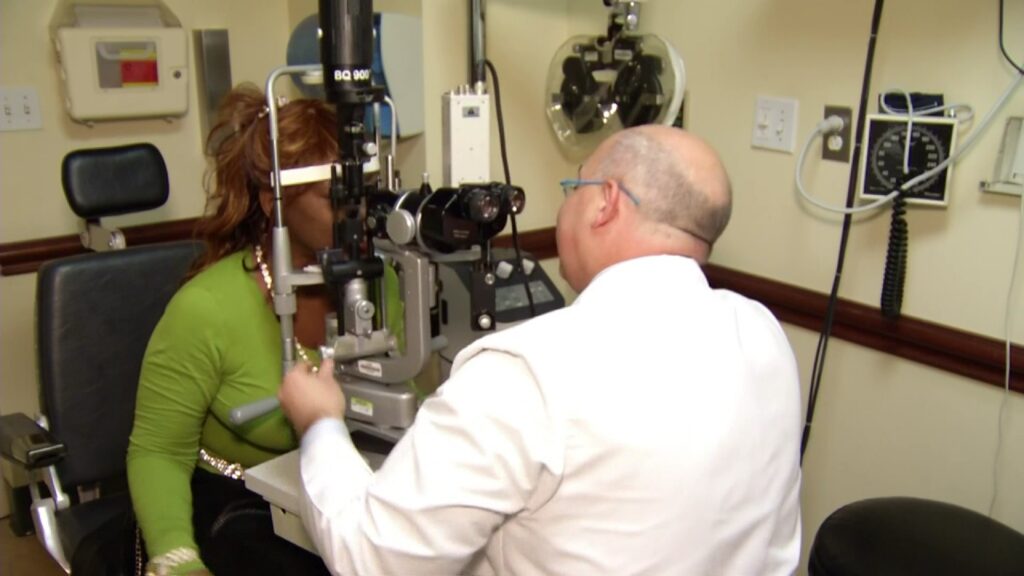Many people rely on glasses or contact lenses to correct their vision. However, there is a solution that offers a life-changing experience – LASIK eye surgery. This procedure has gained popularity for its ability to provide clear and sharp vision without the need for glasses or contacts. Understanding the benefits and process of LASIK can help individuals make an informed decision about their vision correction options.
Understanding LASIK Eye Surgery
LASIK stands for Laser-Assisted In Situ Keratomileusis. It is a surgical procedure that reshapes the cornea, the clear front surface of the eye with lasik surgery. By altering the shape of the cornea, LASIK corrects refractive errors such as nearsightedness, farsightedness, and astigmatism. The reshaping of the cornea enables light rays to focus properly on the retina, resulting in clearer vision.
The Science Behind LASIK
During LASIK, the surgeon creates a thin flap in the outer layer of the cornea using a microkeratome or a femtosecond laser. This flap is then lifted, and an excimer laser is used to remove a small amount of corneal tissue. The removal of tissue is based on the patient’s specific refractive error. The flap is then repositioned, acting as a natural bandage that helps the eye heal more quickly.
But let’s dive deeper into the science behind LASIK. The excimer laser used in the procedure emits a cool ultraviolet light beam that precisely removes microscopic amounts of tissue from the cornea. This highly specialized laser works by breaking the molecular bonds of the corneal tissue, essentially vaporizing it. The laser’s accuracy and precision allow the surgeon to reshape the cornea with incredible detail, ensuring optimal vision correction.

Furthermore, the creation of the corneal flap is a crucial step in LASIK surgery. The microkeratome, a handheld instrument with an oscillating blade, or the femtosecond laser, a laser that creates the flap with rapid pulses of light, both enable the surgeon to access the underlying corneal tissue. The choice of instrument depends on the surgeon’s preference and the patient’s specific needs.
The LASIK Procedure: A Step-by-Step Guide
The LASIK procedure typically takes less than 30 minutes and is considered to be minimally invasive. Before the surgery, the patient may receive numbing eye drops to ensure comfort throughout the procedure. The surgeon will then use a device to keep the eye open and stabilize the patient’s gaze. The entire surgical process is guided by advanced computer technology, ensuring accuracy and precision.
Now, let’s take a closer look at the step-by-step process of LASIK surgery. Firstly, the surgeon will clean the eye and place a sterile drape over the face to maintain a sterile environment. Next, a suction ring is applied to the eye to create pressure and stabilize the cornea. This pressure helps to create the corneal flap more accurately.
Once the corneal flap is created, the surgeon will carefully lift it to expose the underlying corneal tissue. The excimer laser is then used to remove the predetermined amount of tissue, based on the patient’s refractive error. The laser pulses with extreme precision, reshaping the cornea to the desired curvature.
After completing the procedure, the surgeon will provide instructions for post-surgery care and schedule a follow-up appointment to monitor the healing process and address any concerns.
It’s important to note that LASIK surgery is a highly customizable procedure. The surgeon takes into account the patient’s unique eye measurements, prescription, and individual needs to ensure the best possible outcome. The advancements in technology and surgical techniques have made LASIK a safe and effective option for vision correction.
The Multifaceted Benefits of LASIK
LASIK offers numerous benefits that extend beyond improved vision quality. Let’s explore some of the advantages individuals can experience after undergoing this life-changing procedure.
Improved Vision Quality
One of the primary benefits of LASIK is the significant improvement in vision quality. Many patients achieve 20/20 vision or better after the procedure, reducing their dependency on glasses or contact lenses. Clear vision can enhance daily activities such as driving, reading, and participating in sports.
Imagine being able to read your favorite book without squinting or straining your eyes. LASIK can provide you with the clarity and sharpness of vision that you’ve always desired. Whether it’s enjoying the beautiful details of a painting or marveling at the intricate patterns of nature, LASIK can truly enhance your visual experience.
Not only does LASIK improve your vision, but it also enhances your overall quality of life. With clearer vision, you can confidently navigate your surroundings, whether it’s exploring new places or simply going about your daily routine. Say goodbye to the constant search for misplaced glasses or the discomfort of wearing contact lenses for extended periods.
Lifestyle Advantages of LASIK
For individuals with active lifestyles, LASIK can be a game-changer. Engaging in sports or recreational activities without worrying about glasses or contacts provides freedom and convenience. LASIK also eliminates the hassle of maintaining and purchasing prescription eyewear.
Imagine diving into the crystal-clear waters of a tropical paradise without the fear of losing your glasses or having your contacts washed away. LASIK can give you the freedom to fully immerse yourself in the activities you love, whether it’s swimming, hiking, or playing a game of basketball. No more interruptions or limitations caused by vision correction methods.
Furthermore, LASIK can enhance your professional life as well. Imagine being able to confidently deliver presentations without the distraction of glasses or the discomfort of dry contact lenses. LASIK can give you the competitive edge you need to excel in your career, allowing you to focus on your goals and aspirations.

Long-Term Financial Benefits
Although LASIK is an investment, many individuals find that its long-term financial benefits outweigh the initial cost. Eliminating the need for glasses or contacts can result in significant savings over time. Additionally, LASIK may eliminate the need for regular vision-related appointments and expenses.
Think about the amount of money you spend on glasses or contact lenses every year. From purchasing frames to replacing lost or broken glasses, the costs can quickly add up. With LASIK, you can say goodbye to these recurring expenses and redirect your hard-earned money towards other aspects of your life.
Furthermore, LASIK can save you valuable time. No more rushing to the optometrist for eye exams or spending hours trying on different frames. LASIK offers a one-time solution that can free up your schedule and allow you to focus on the things that truly matter to you.
Investing in LASIK is not just about improving your vision; it’s about investing in your future. By choosing LASIK, you are making a long-term investment in your well-being, convenience, and financial stability.
Debunking Common Myths about LASIK
While LASIK has proven to be a safe and effective procedure, there are several misconceptions and concerns that surround it. Let’s address these myths and provide clarity on the realities of LASIK.
Addressing Safety Concerns
Some individuals worry about the safety of LASIK. However, it is important to note that LASIK has been performed for over two decades and has a high success rate. The procedure is FDA-approved, and advancements in technology have made it safer than ever.
When it comes to safety, it’s crucial to understand that LASIK is performed by highly trained and experienced surgeons. These professionals undergo rigorous training and adhere to strict safety protocols to ensure the best possible outcomes for their patients. Additionally, the use of state-of-the-art equipment and techniques further enhances the safety of the procedure.
Furthermore, before undergoing LASIK, patients are required to undergo a comprehensive eye examination to determine their eligibility for the surgery. This examination includes a thorough evaluation of the cornea, pupil size, and overall eye health. This screening process helps identify any potential risks or contraindications, ensuring that only suitable candidates proceed with the surgery.
Unveiling the Truth about Pain and Discomfort
It is common for individuals to fear pain or discomfort during LASIK. However, the procedure is virtually painless. The surgeon will administer numbing eye drops before the surgery, ensuring a comfortable experience for the patient.
During the procedure, patients may feel a slight pressure or a sensation of something touching their eye, but it is not painful. The use of numbing eye drops eliminates any potential discomfort during the surgery itself.
After the surgery, some individuals may experience minor discomfort, such as dryness or a gritty sensation in the eyes. This is a normal part of the healing process and usually resolves within a few days. Eye drops and over-the-counter pain relievers can be used to manage any discomfort during this time.
It’s important to note that everyone’s healing process is unique, and some individuals may experience a faster recovery with minimal discomfort. The surgeon will provide detailed post-operative instructions and prescribe any necessary medications to ensure a smooth healing process.
In rare cases, complications such as infection or inflammation may occur, but these are extremely rare and can be effectively managed with prompt medical attention. It is essential to follow all post-operative care instructions provided by the surgeon to minimize the risk of complications and ensure optimal healing.
By debunking these common myths and addressing concerns about LASIK, we hope to provide a clearer understanding of the procedure. LASIK has helped millions of people achieve clearer vision and reduce their dependence on glasses or contact lenses. If you are considering LASIK, consult with a qualified eye care professional who can evaluate your specific needs and provide personalized guidance.

Evaluating if LASIK is Right for You
LASIK is not suitable for everyone. Several factors determine whether an individual is eligible for LASIK. A thorough evaluation by an experienced eye surgeon is necessary to determine if LASIK is the right choice. Let’s take a closer look at the eligibility criteria and the pre-surgery consultation and evaluation process.
Eligibility Criteria for LASIK
Common criteria for LASIK eligibility include stable vision prescription, a certain minimum age, and good overall eye health. The surgeon will assess these factors and consider any specific concerns that may affect the patient’s candidacy.
Pre-Surgery Consultation and Evaluation
Prior to LASIK, a consultation with the surgeon is essential. This consultation involves a comprehensive eye examination, including measurements of corneal thickness, pupil size, and refractive errors. The surgeon will discuss the procedure, answer any questions, and address any concerns the patient may have.
Life After LASIK: What to Expect
After LASIK surgery, proper post-operative care and recovery are crucial to achieving the best possible visual outcome. Let’s explore what individuals can expect during the post-surgery period and how to maintain their vision post-LASIK.
Post-Surgery Care and Recovery
Following LASIK, patients will receive detailed instructions on how to care for their eyes during the healing process. This may include using prescribed eye drops, avoiding strenuous activities, and protecting the eyes from irritants such as dust and water. It is essential to follow these instructions to ensure a successful recovery.
Maintaining Your Vision Post-LASIK
To maintain the benefits of LASIK, it is crucial to prioritize eye health. This includes attending follow-up appointments with the surgeon, practicing good eye hygiene, and protecting the eyes from excessive sun exposure. Regular eye exams and adopting a healthy lifestyle can further contribute to long-term vision health.
In conclusion, LASIK eye surgery offers multiple benefits, including improved vision quality, lifestyle advantages, and long-term financial savings. By debunking common myths and understanding the eligibility criteria, individuals can make an informed decision about LASIK. Following the procedure, proper post-operative care and maintaining overall eye health are essential for long-term vision success. With LASIK, individuals can look forward to a future with clear vision and a renewed sense of freedom.
More to read: Everything You Can Expect When Getting Laser Eye Surgery

Leave a Reply